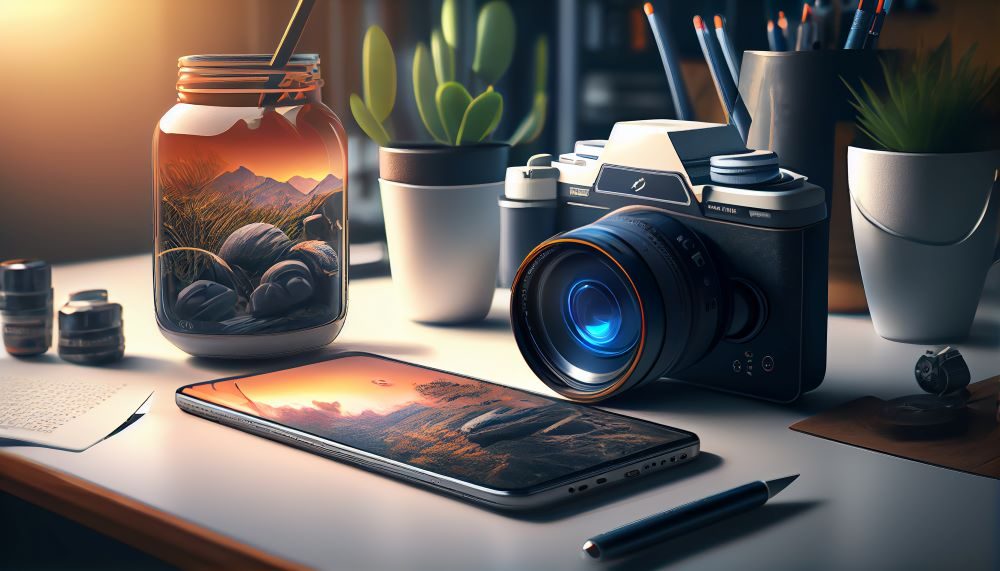In today’s dynamic digital landscape, versatility is paramount for success. While graphic design may be your primary focus, incorporating photography into your skill set can open new avenues of creativity and proficiency. Here, we delve into five photography techniques, each accompanied by relevant examples to illustrate their impact and application within the realm of graphic design.
Perfecting Balance and Composition

Achieving balance and composition is fundamental in both photography and graphic design, serving as the cornerstone of visually compelling imagery. The “Rule of Thirds,” a timeless principle, divides an image into thirds both horizontally and vertically, guiding the placement of key elements. For instance, consider a brochure design where product images are strategically positioned using the Rule of Thirds to create visual interest and guide the viewer’s gaze, fostering engagement and enhancing overall aesthetic appeal.
Embracing Depth of Field

Depth of field adds depth and dimension to photographs, allowing designers to control focus and draw attention to specific subjects. By understanding depth of field, graphic designers can create visual hierarchy and emphasis within their designs. Take, for example, a website banner featuring a luxury watch. Employing a shallow depth of field technique highlights the intricate details of the watch while softly blurring the background, elevating the perceived value and allure of the product, thus captivating the audience and reinforcing brand prestige.
Harnessing Light and Shadow Dynamics

Lighting is a powerful tool in photography, capable of shaping mood, emphasizing texture, and conveying emotion. By skillfully manipulating light and shadow, photographers evoke different narratives and evoke emotional responses in their images. Similarly, graphic designers can leverage lighting effects to add depth and drama to their designs. Imagine a poster design for a film noir-themed event. By strategically utilizing dramatic lighting and contrasting shadows, the designer creates a visually captivating composition that embodies the essence of mystery and intrigue, compelling viewers to explore further and engage with the content on a deeper level.
Mastering Color Theory

Color science lies at the heart of both photography and graphic design, influencing perception, mood, and brand identity. An understanding of color theory empowers designers to create harmonious palettes that resonate with their audience. For instance, in a branding project, the strategic use of complementary colors not only enhances visual appeal but also reinforces brand personality and values, fostering a strong emotional connection with consumers and establishing brand recognition.
Adopting a Strategic Approach

Success in photography and graphic design hinges on a structured and strategic approach. By developing a systematic workflow and embracing iterative refinement, designers can elevate the quality and effectiveness of their work. For example, in a website redesign project, the designer begins by conducting thorough research and analysis, identifying user needs and objectives. They then create a comprehensive mood board and design brief, ensuring alignment with client expectations and project goals. Through iterative prototyping and user testing, the design evolves, resulting in a final product that not only meets but exceeds the client’s expectations, delivering tangible value and driving meaningful outcomes.
Conclusion
Incorporating these photography techniques into your graphic design practice not only enhances your creative capabilities but also strengthens your professional versatility. By mastering the interplay of balance, depth, light, and color, you’ll craft designs that resonate deeply with your audience and leave a lasting impression. Embrace these principles as essential tools in your creative arsenal, and watch as your designs transcend mere visuals to become compelling narratives in their own right.
The Graphic Design Diploma Program at ABM College allows students an opportunity to explore their creative and visual communication skills in a digital world. Students gain a thorough understanding of fundamental graphic design principles, and how to design digitally using various tools. Students finish off with a 4-week practicum placement at the end of the course to add work experience to their resume. ABM College offers this program in Ontario as well so you can learn the nitty gritty of graphic designing in Ontario!
Contact us to learn more about this program.
Stay ahead of the curve with our blog.
About The Author

Private Career College
ABM College is a leader in career-focused education, committed to empowering students with industry-relevant skills. With expert instructors and practical training, ABM College delivers high-quality programs in health, business, technology, and more, ensuring graduates are prepared to meet workforce demands. Known for its supportive learning environment and a focus on real-world application, ABM College is a trusted educational partner helping students achieve professional success across Canada.
